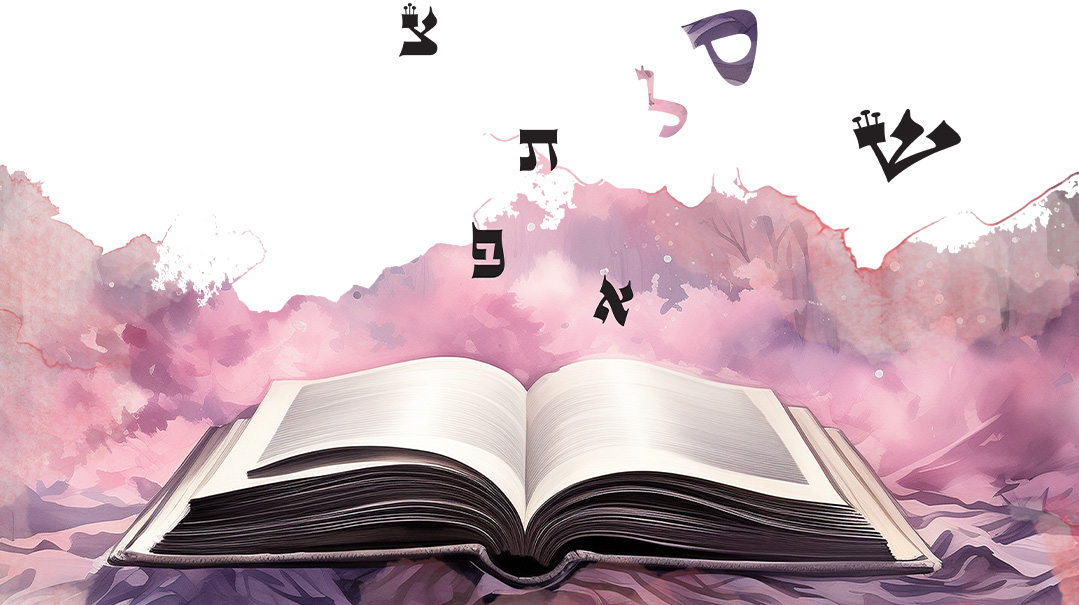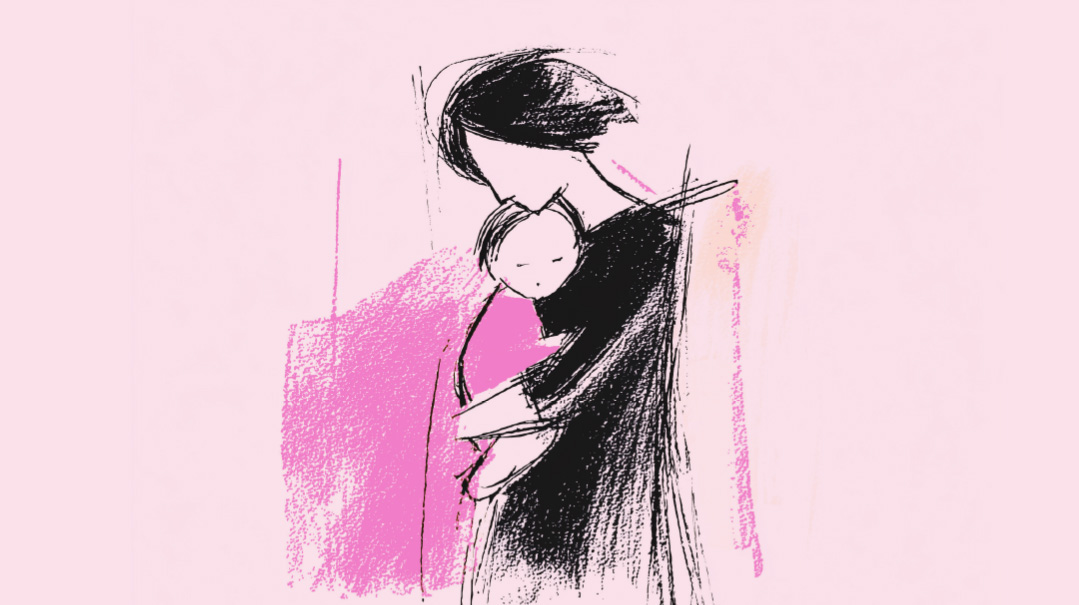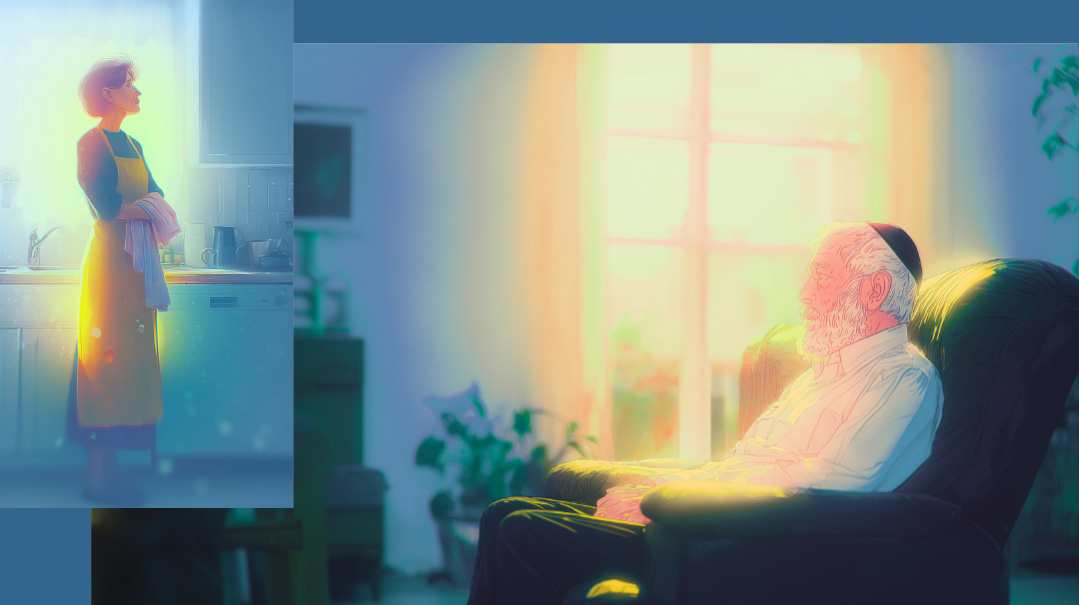A Perek a Day
| March 26, 2024For the women learning Nach Yomi, ancient words illuminate current events

In a large shul with high ceilings and blond wood, hundreds of women sit together, listening intently to a lecturer. Teenagers sit next to octogenarians, besheiteled women next to women in vibrant tichels or hats. What’s the common factor in this diverse crowd? They’re all participants of the Torat Imecha Nach Yomi program, and they’ve come together to celebrate the completion of a cycle.
Family First spoke with Rebbetzin Dr. Adina Shmidman, who initiated the program, and a number of participants and teachers to find out more about this program, which so many women have described as “life-changing”
Around 20 years ago, someone approached Rabbi Jack Abramowitz at the Orthodox Union, and asked if he’d start a Nach Yomi program, in which participants learn a perek a day of Nach. He did, and it became the very first program in OU Torah, the OU’s Torah content website.
When Rebbetzin Shmidman became the founding director of the OU’s Women’s Initiatives Department in 2017, it was shortly before the beginning of another Nach Yomi cycle. At the time, Nach Yomi had only male teachers, and someone suggested that Rebbetzin Shmidman start a stream for women with female teachers.
“It was a great suggestion, but the timing wasn’t right,” says Rebbetzin Shmidman. She shelved the idea, intending to make it happen for the next cycle. “The cycle is almost two years long,” she explains. “It works out beautifully: Six months of Neviim Rishonim, six months of Neviim Acharonim, five months of Tehillim, and then the rest of the Kesuvim,” she says.
In November of 2019, it suddenly hit her that the current Nach Yomi cycle was almost finished, leaving her only ten weeks to launch a women’s version. The new Nach Yomi cycle would be starting at the same time as the new Daf Yomi cycle. “The spirit was in the air, the energy was there, the desire for learning was there. We were thrilled to move forward with that collective momentum,” she says.
Working down to the wire, Torat Imecha Nach Yomi launched on time. The reception exceeded expectations. “I told our team that if we got 300 people to sign up, I’d be very, very pleased,” says Rebbetzin Shmidman. “In my heart, I thought if we could get a thousand, I’d be absolutely over the moon.” Over 6,500 women from all over the world signed up for that first cycle. This past cycle, over 10,000 women participated.
Rebbetzin Marcy Fried from Dallas was one of the women who rode that wave of the Siyum HaShas right into Nach Yomi. Marcy attended the Siyum HaShas in 2020, and came out of the experience very motivated. “Even as a rebbetzin who learns and teaches regularly, this experience made me want to take on some daily learning, something more systematic. I saw the transformation, how doing Daf Yomi inspired people and changed their lives.” The Nach Yomi program was exactly what she was looking for.
SISTERHOOD OF LEARNING
While initially Marcy didn’t know any other women who signed up to do Nach Yomi, it didn’t take long to find them. “I was telling my neighbor that I’d started this new learning program,” she says. To her delight, her neighbor had also started it.
Marcy continued to discover other women in her community who were also doing it. At the end of the first cycle, the women made a joint siyum and invited Mrs. Shira Hochheimer, one of the Nach Yomi presenters, to come in. Their accomplishment and the siyum drew attention, and was even covered in the local Jewish newspaper. Through the enthusiasm it generated, significantly more women signed up for the next cycle of learning.
For the second round, 28 women from Dallas finished the cycle, and they brought in Mrs. Sara Malka Winter, another Nach Yomi teacher, to celebrate. At that siyum, Marcy asked anyone in the room who finished the cycle to stand. Those women stood, everyone clapped for them, and Marcy asked them to keep standing. Then she asked for anyone who’d learned a perek to stand up, and tons of women stood. Then she asked for anyone who’d registered for the next cycle to stand. Almost the entire room was standing at that point.
The communal learning aspect is something that appealed to many participants, including Arielle Wolfson and teen Ayelet Pollack. When Arielle heard about the Nach Yomi program, she suggested to her group of friends in Far Rockaway that they do it together. “When you do it with a group of friends, it makes the whole experience so much more enjoyable,” shares Arielle. “Friends also challenge you to stay on course,” she adds.
“One time a rav from Chicago was staying in my bungalow colony, and he and his wife came for a Shabbos meal,” says Ronit Biderman of Flatbush, who is on her third round doing the Nach Yomi cycle. “The Rav was saying something about Shimshon’s mother, Manoach’s wife, and he asked if anyone knew her name. Everyone was quiet. It seemed like I was the only one who knew, but looking around the table, I noticed his wife had a glimmer in her eyes and I asked her, ‘Do you do Nach Yomi?’ You can tell who does when the person gets that glimmer in their eye that they get it. It’s like the best little secret club.”
“It’s not like you’re just sitting down and opening up a sefer to learn by yourself,” says Ayelet, who started doing Nach Yomi when she was just ten years old. “There’s all these teachers giving shiurim, and there’s the daily emails and weekly newsletters, where you hear about what other people have been doing.”
The cycle had already started by the time Ayelet heard about it, but that didn’t deter her. “It took me a while until I was actually on track with what everyone else was doing, but then it just became a part of my everyday life,” Ayelet shares modestly. “For a time, I’d wake up, eat breakfast, and do Nach Yomi.” During the summer when she missed a lot of daily learning while at camp, Ayelet took advantage of any travel time in her schedule to download a number of classes and catch up.
DAILY IMPACT
“As parents, my husband, and I have really been blown away,” says Ayelet’s mother, Sara, who accompanied Ayelet to the siyum two years ago, where Ayelet was recognized as the youngest participant. “We get a lot of nachas seeing how excited she is by the Torah learning,” she says, noting that Ayelet’s three younger sisters look up to her as a role model. “We have the voices of all of the incredible women who give the shiurim throughout our home when Ayelet is baking in the kitchen and listening to various shiurim, so it has filled our home with the words of Tanach.”
Each recorded Nach Yomi class is approximately 15 minutes long. “There are women who listen to the classes while sitting and focused and writing notes. There are also women who are driving carpool or commuting to work or taking a walk or doing housework while they listen. There’s no one right way to do it,” says Rebbetzin Shmidman.
Arielle would try to listen to the class after davening, but if that didn’t work out, she’d listen while out on a walk. “I prefer to listen to it sitting down with an open sefer, but that didn’t happen all the time, which was fine,” she says practically. “If you want to be able to finish it and do it every day, you have to be flexible.”
What Marcy has seen through her own experience and that of all the women she’s learned with is that doing Nach Yomi is slowly transformative. “First you finish one day, then you finish one sefer, and before you know it, you’ve done 70 chapters, and it’s a part of your life.”
Ronit remarks that four years ago, she never would have imagined talking the way she does now about Nach. “It’s the best life-changing thing I’ve done. I look at the world in a whole different way. Once you start it, you never want to stop, it’s just so amazing.”
As someone who loves learning and hadn’t had a chance to go through all the seforim in Nach, the program was right up her alley, though she wondered if it was going to be in-depth enough for her taste. “I realized that it was an incredible way to go through seforim that I’d never even learned, and if I wanted to go into it in more depth on my own, I could. But this program is a very easy way to go through Nach. It seems like nothing, but in two years you do the whole thing.”
This learning has brought the Jewish people’s history alive for Ronit. “When you get up to Yom Kippur, and you’re learning Yonah, all of a sudden you totally understand why Yonah wouldn’t want to go to Ashur. You feel what Ashur is. You feel it in your bones.”
Learning Nach Yomi has significantly increased Ayelet’s depth of knowledge of Tanach. “I just know so much, different insights or words that I’ve learned. Now I know how to apply the stuff I’m learning in school,” says Ayelet in her soft voice.
“Her teachers are always commenting on how much they appreciate what she brings to class from the Nach Yomi learning,” her mother, Sara, adds.
The learning isn’t only helpful in school. “The teachers give lessons at the end of the shiur that you can connect to. With Tehillim, there are so many different lessons that you can relate to as you’re going through your day,” Ayelet says.
Rebbetzin Shmidman shares two moving stories about the impact of the program. “A woman who had recently given birth was asked why she chose the name Yaakov Azaria for her baby,” she says. “Yaakov was after her late father, and Azaria was because she had been listening to Sefer Daniel through the Torat Imecha Nach Yomi program on her way to the fertility clinic. ‘I just had this feeling that this time the treatments would work,’ the new mother said. ‘And I said to Hashem, if it does work, I will name my child Azaria.’ ”
And at an event some years ago, Rebbetzin Shmidman met a young woman who was still single after many years of dating. “She spoke to her mother every day, but the conversations had become very strained. It’s hard being single and knowing what her mother’s thinking and struggling to find what to talk about. Then they started to learn Nach Yomi, and now they are able to have conversations that connect them again.”
FOR EVERYONE
This Nach Yomi program is accessible to anyone who is interested in learning; it’s not necessary to have a strong day school background. Rebbetzin Shmidman points out that even for women who did learn some Navi in school, there are many perakim that aren’t covered. “It’s learning it the way Chazal wanted it to unfold. They put it in this order for a reason,” she says.
Doing Nach Yomi was the first time Ronit had ever learned Nach consecutively. “When you’re in school, you learn Navi because they have teachers and they teach you Navi. Nach Yomi is a choice that you make on your own as an adult. And you’re learning it as an adult with an adult mind, not with a child’s or a teenager’s mind. It’s a very, very different thing,” she notes.
“There’s something very compelling about learning Nach,” says Rebbetzin Shmidman. “It’s our words, it’s our heritage, it’s our anchor.” It provided a crucial anchor almost immediately, as Covid broke out just three months into that first cycle. “The whole world was falling apart, you couldn’t even leave your house,” she says. “But you could rely on getting your recording every day.”
As much as Nach Yomi was a comfort to learn during Covid, it carries even more immediacy with the current war. “When you hear the words of Daniel, Ezra, Nechemiah, about the returning to the land, the primacy of the land, hostages, captives, you almost can’t believe what you’re reading. It’s what we’re living,” says Rebbetzin Shmidman. “You’re not reading ancient words, and I think we’re all experiencing this with Tehillim, where it feels like Dovid Hamelech is a roving reporter, holding the microphone and reporting on exactly what’s happening now.”
The place where Arielle noticed a strong impact on her learning was in her tefillah. “There’s a lot of Tehillim in our davening, and it just absolutely deepened my understanding of tefillah and Tehillim itself. When you learn the stories behind when David Hamelech said certain verses, it really gives you such a deeper understanding of the emotion behind it.”
She notes that in Navi, the importance of achdus is strikingly clear. “Hashem answers Klal Yisrael so much when there’s achdus. That’s a message that’s very relevant today. When we have unity, we have such brachah and Hashgachah pratis. And without it, it’s very scary.”
She mentions with a laugh that Navi really contains a lot of mussar, but adds that she found it interesting how today we’re so similar to those who lived thousands of years ago. “The same type of challenges that people had thousands of years ago we face today. The whole human experience hasn’t changed that much.”
As remarkable and sometimes overwhelming as it can be to see the ancient words be entirely modern, Rebbetzin Shmidman says that it is also reassuring. “There’s a bigger picture. We fit into something so much bigger.”
And fitting into a larger framework is part and parcel of Nach Yomi. “It’s not just a journey with words that have continuity, range, scope, and depth, but we’re also doing this with a community of sisters.” There are women learning daily from across the globe, everyone in their own space, but unified in this collective study. We’re all sitting in the same classroom, the largest Navi classroom ever,” says Rebbetzin Shmidman.
TEACHING NACH
A lot of thought and siyata d’Shmaya was involved in finding the shiurim presenters. The OU audience is diverse when it comes to age, background, and hashkafah, so the presenters needed to have broad appeal.
“I try to think about the style of the sefer and the style of the presenter,” says Rebbetzin Shmidman. She also took great care with seforim that had content that needed handling with care, such as with the story of Dovid and Batsheva. “There’s tremendous joy and energy and excitement, but I also understand the weight of this. I’m implementing the messaging of these texts to thousands of women. In a classroom, someone could raise their hand and ask for clarification. With this platform, while people can, and some do, email with questions, there’s minimal dialogue,” she says. That raises the stakes for making everything as clear as possible from the outset.
“Each presenter has their style, their personality, their way of teaching,” says Marcy. “It’s so fascinating. Sometimes the teacher reads right from the pesukim, sometimes she gives a summary of the perek. There’s an option to have the text of the pesukim sent to you, and a summary is provided with the email. The whole system is so practical for women.”
When Rebbetzin Shmidman asked Sara Malka Winter, beloved teacher and sought-after speaker from Silver Spring, Maryland, which sefer of Nach she’d be comfortable teaching, Tehillim was a natural choice. She had already been teaching it for a few years, so it was familiar content. “It was such a meaningful and beautiful experience, both to prepare a whole perek, knowing that I only had 12 to 15 minutes to try to really capture the heart of the perek, and then to share it with so many people who I don’t know.” She notes that she was used to being able to see people’s expressions when teaching, so recording the classes in a room by herself was a strange experience.
Shira Hochheimer, a noted educator and author of Eishes Chayil: Ancient Wisdom for Women of Today, prepared Sefer Yechezkel for the first cycle, which was not a sefer she had ever learned. When Rebbetzin Shmidman asked her if she’d present that sefer, Shira said to herself, Sure, why not? This will be a good opportunity. How hard could it be? Shira pauses, before she continues wryly, “It was really hard.” For the second cycle she did Yirmiyahu and for the current cycle, she’s doing Yeshayahu.
“I have some sons in yeshivah, and they know a lot more than I do in many ways, but when they have a question about Nach, they’ll call me up and ask,” Shira says. “It’s nice to just have that connection and be able to talk in a conversation that they value.”
It takes Sara Malka about eight to ten hours to prepare each lesson. While she was immersed in the perakim, she knew she needed to stay within the 15-minute time limit, writing out every word of the lesson into a script. Shira also writes out her lessons. “I know that the goal is 15 minutes, and I’ve found that 2,400 words with some pesukim being read takes basically 15 minutes.” She does around eight recordings at a time, editing out the ums and the spaces to maximize her content.
JUST LEARN
If signing up for a two-year commitment to learn a perek a day feels daunting, Rebbetzin Shmidman encourages women to think about the program in a different way. “It’s not an all-or-nothing situation. If you learn just one sefer, that’s one more sefer you know now that you didn’t know beforehand, or that you hadn’t read or you hadn’t learned in a while. It doesn’t have to be that you do it from beginning to end.”
When I asked Ayelet what she would tell girls who feel intimidated about starting the program, she answers pragmatically: “You don’t have to think about it as, like, ‘Omigosh, the whole entire Nach.’ It’s just 15 minutes of a day. So there’s still a lot of other time to do other things.”
“It’s definitely worth the commitment to do it,” emphasizes Arielle. She notes the rewarding sense of starting something and finishing it.
Ronit shares how after learning Nach Yomi she has a much more vivid mental picture of the Beis Hamikdash. “I see the people walking, bringing bikkurim on their heads in baskets, everybody streaming to Yerushalayim, and when you actually learn it inside, you realize how short of a tekufah that actually was. You see what was missing from the time of the second Beis Hamikdash. You feel what galus is about.”
Every woman I talked to had already completed the cycle twice, and were still excited to start again. There was no feeling of being “done” with it or moving on. It’s an essential part of their lives at this point.
I was so inspired by learning about this program that I signed up to do it, too.
Rebbetzin Shmidman said a woman recently told her how she got sad when she reached the end of Divrei Hayamim, and Rebbetzin Shmidman reflected on how that must be such a nachas to Hashem. “I’d call it Nach Nachas. Hear Your people, Hashem. They love Your words. They want to hear more. They want to be part of history. We’re part of history, carry us to the end. We’re here, at the end of Nach. Let’s journey to the end of the story together.”
Women can sign up to join Torat Imecha Nach Yomi here. http://ouwomen.org/nach
(Originally featured in Family First, Issue 887)
Oops! We could not locate your form.







